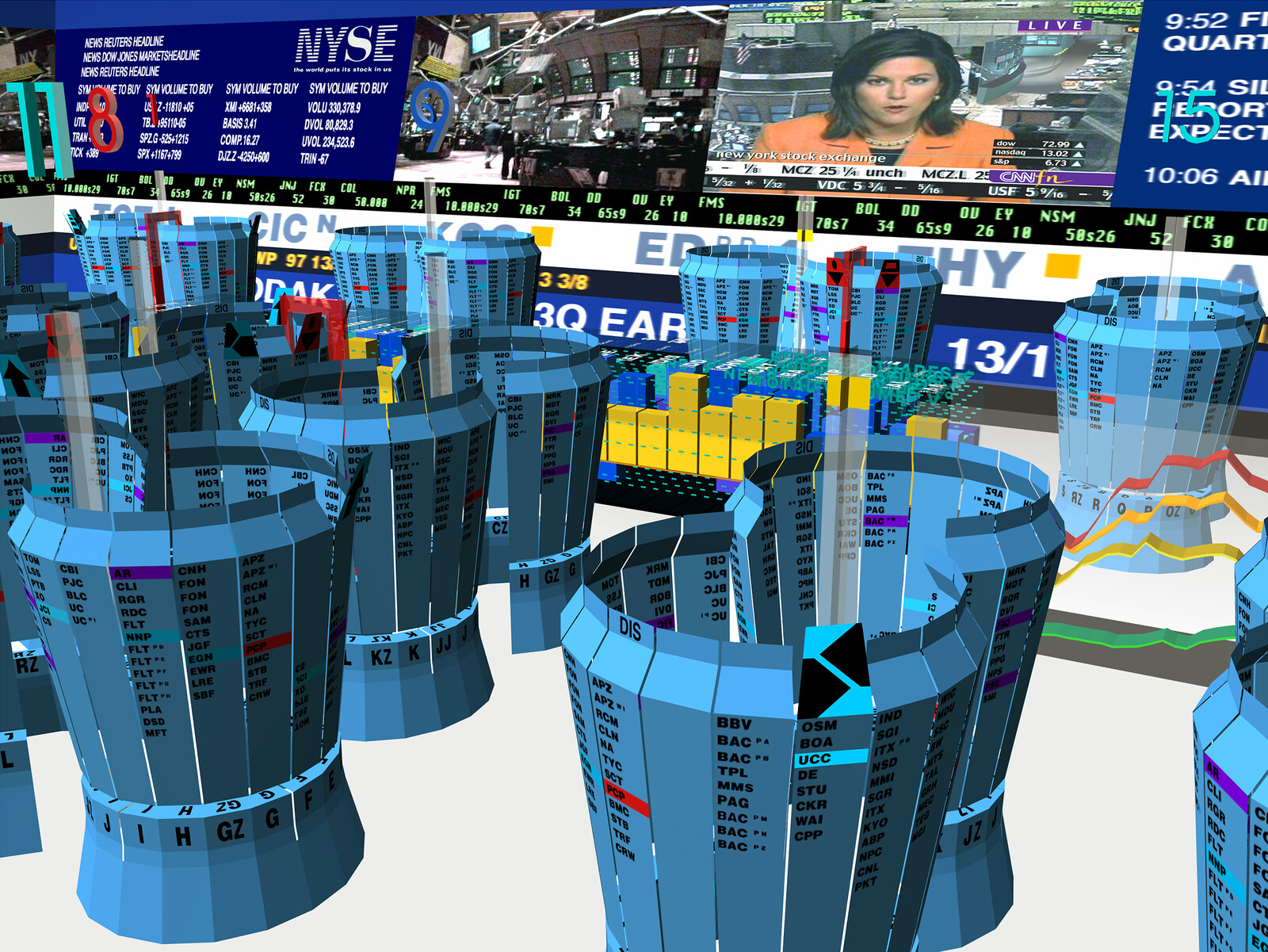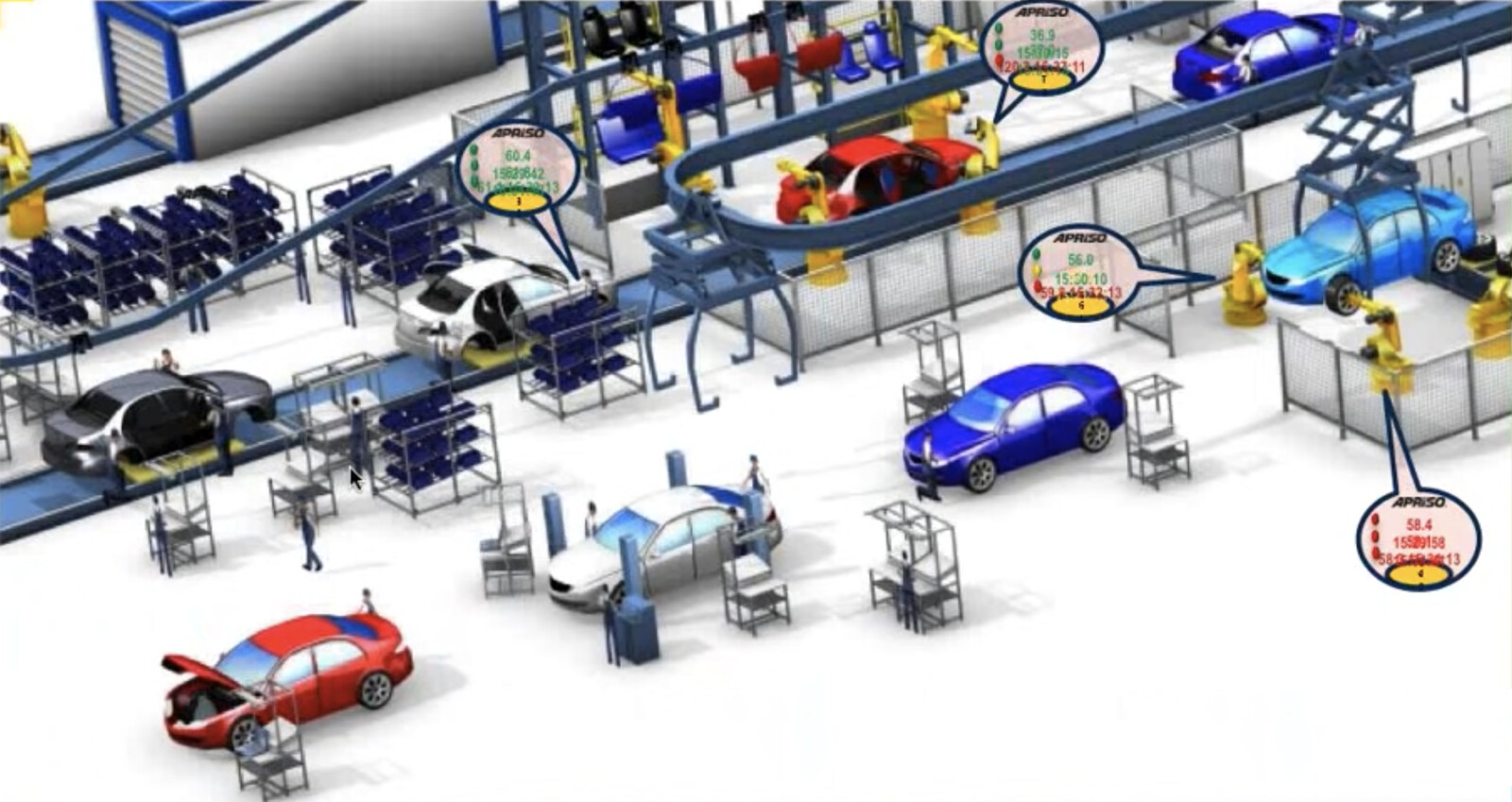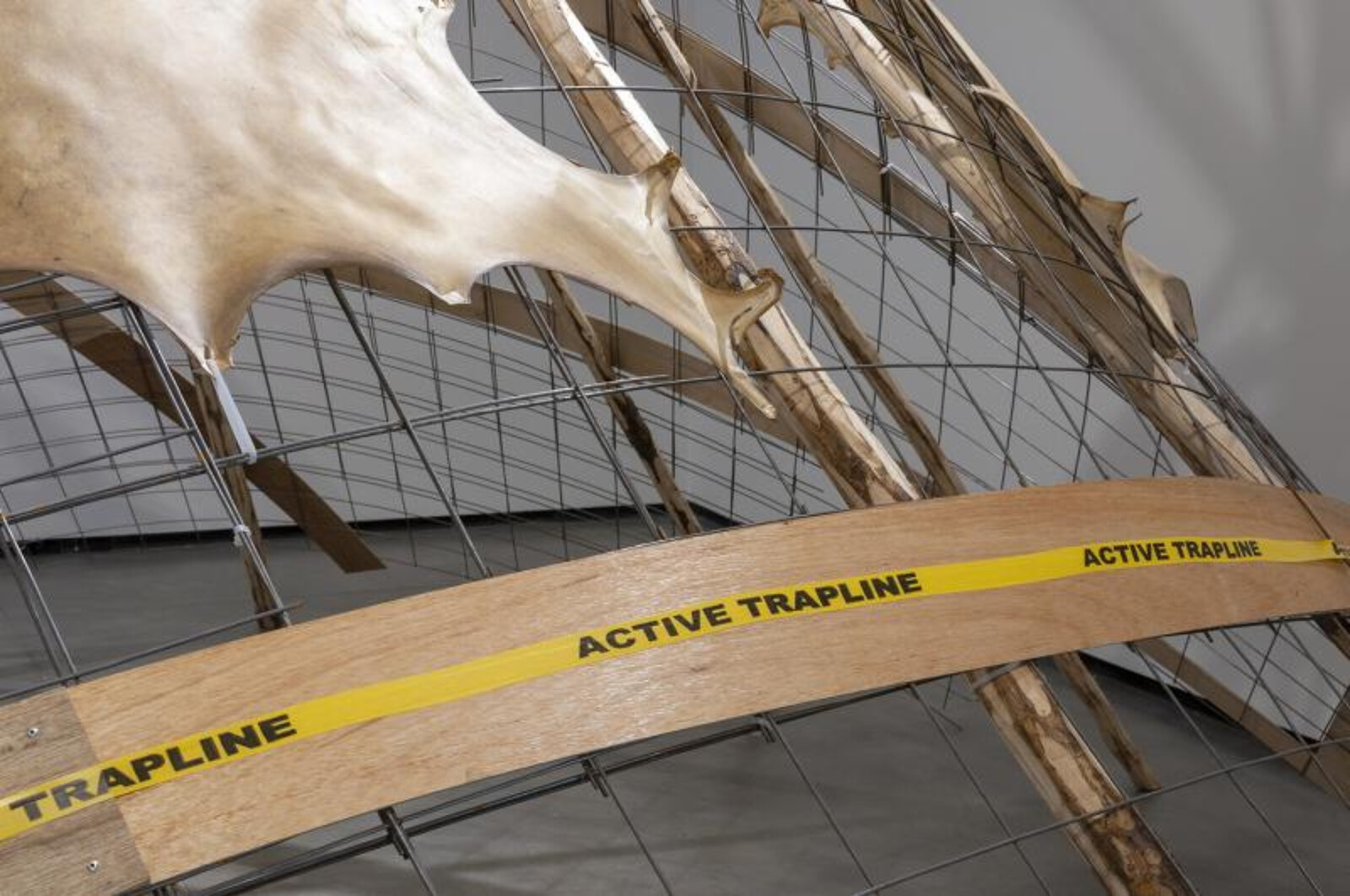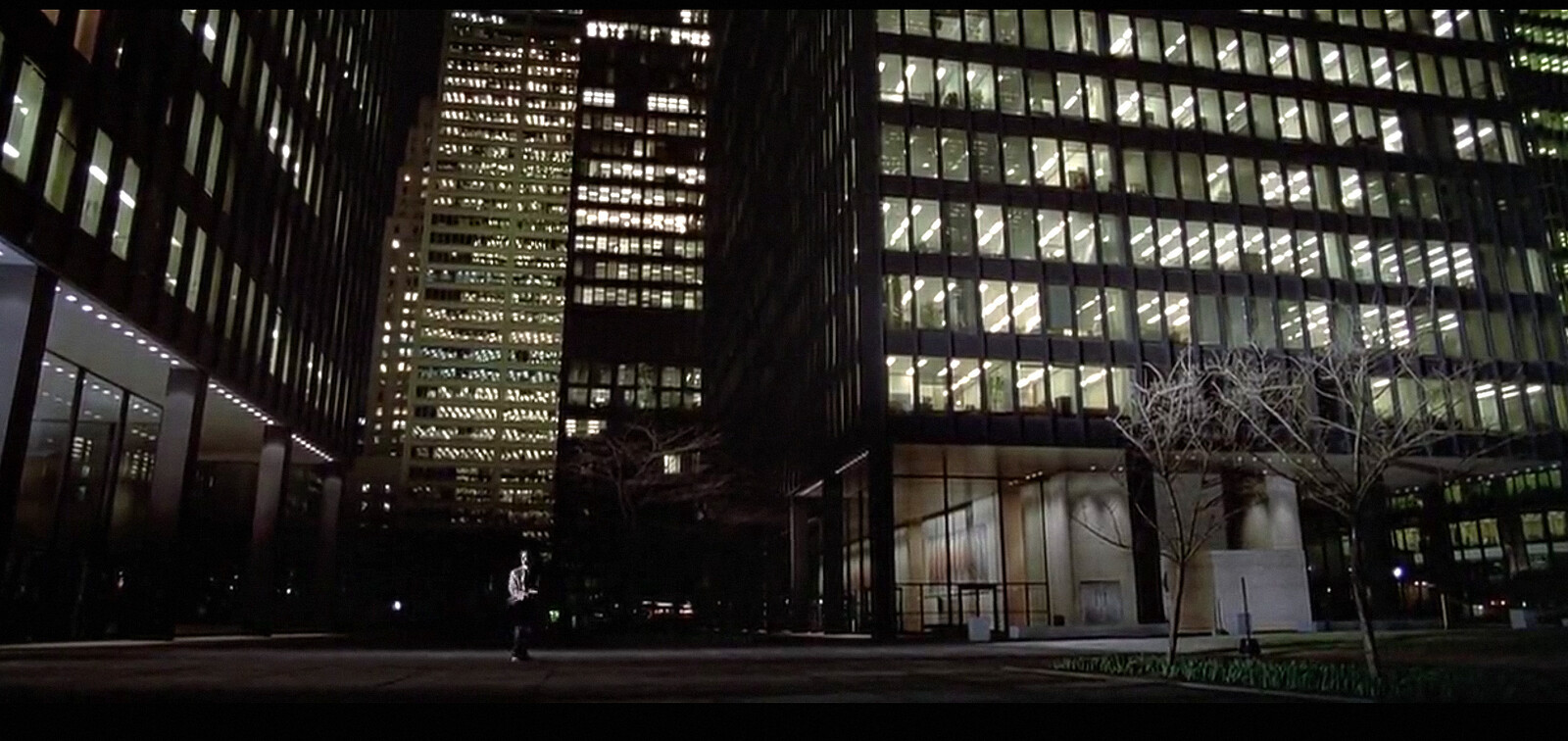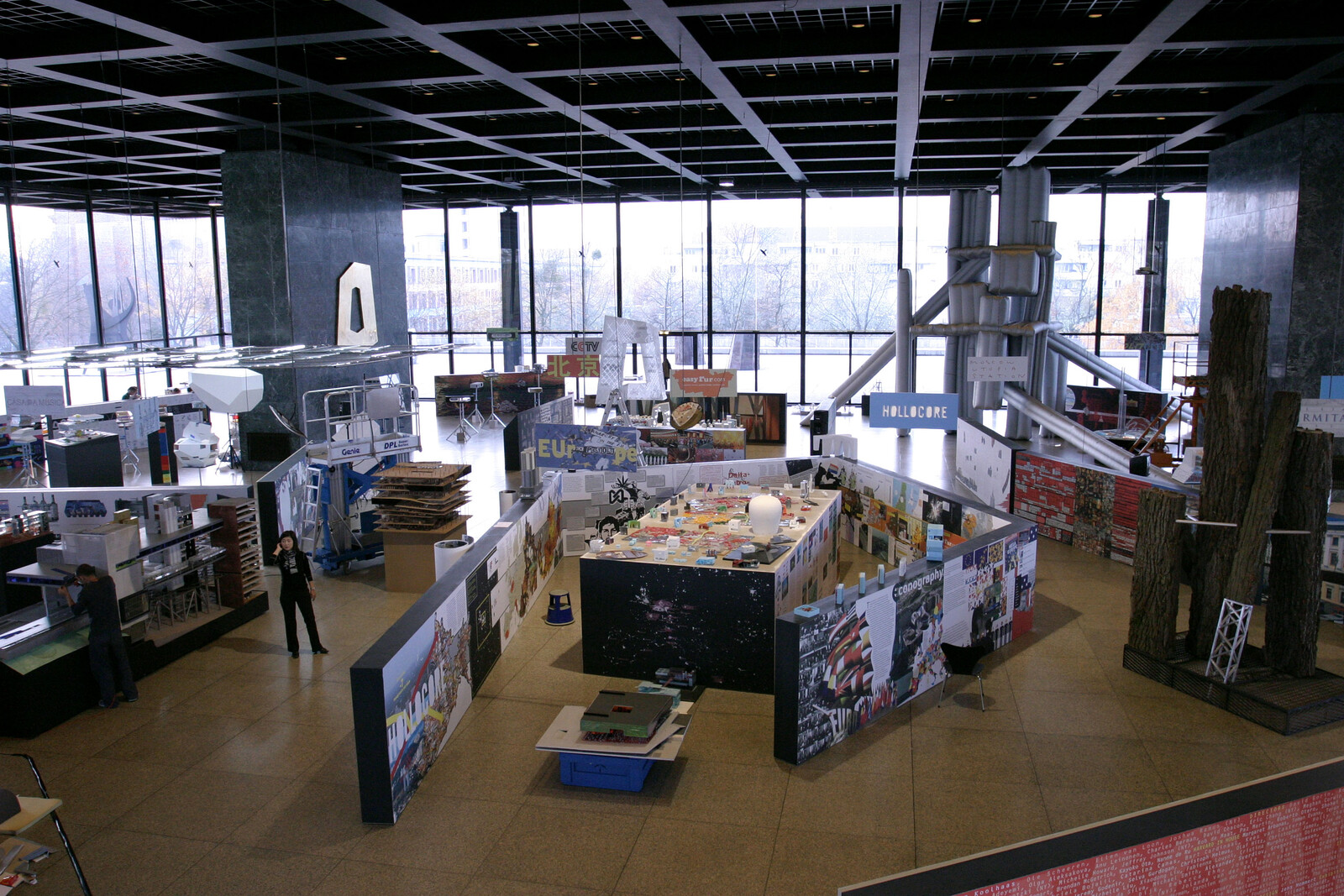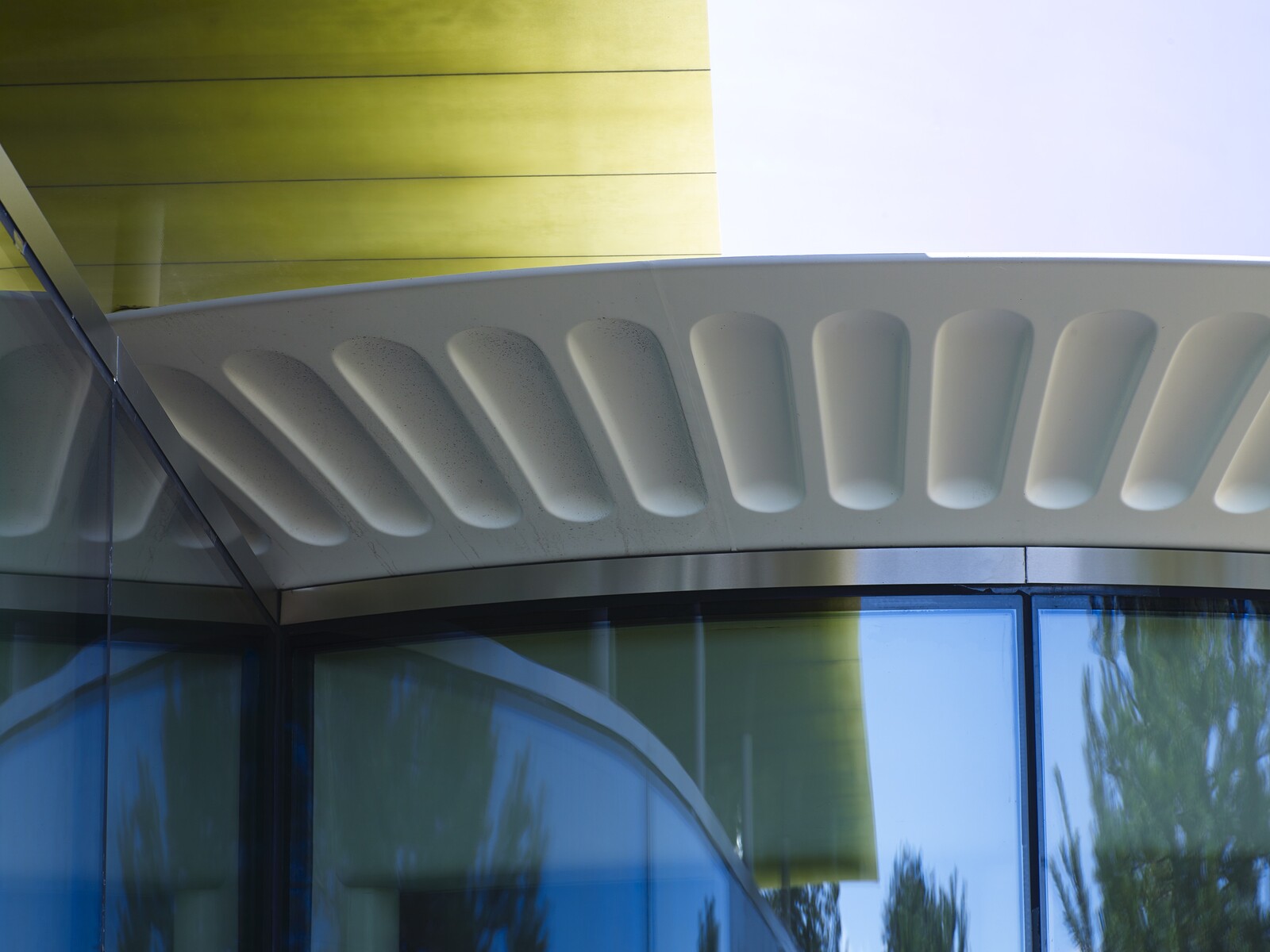Models are having a cultural moment, with countless publications, exhibitions, dissertations, design practices, and technologies across multiple disciplines suddenly coming together under the rubric of the model. Some of this attention is explained by the growing authority of the history of science in academia, a discipline for which the model has proved an especially salient means of studying the precise mechanics of knowledge production.1 The adoption of that field’s approach to models in the domain of architecture, however, has encouraged some to develop the view that all models are epistemic. This essentializing mistranslation hinders the critical examination of how models construct rather than represent knowledge, and has given new life to the essentialist logic of medium specificity within the field. In other words, the history of science has produced an authority structure that permits some thinkers to substitute the troublesome belief in a medium of architecture rooted in pure space and structure with a new faith in the medium of the model as an intrinsically useful tool of knowledge. A contradictory tendency has found traction outside the academy, particularly in sites designed for spectacle and display such as galleries and Instagram, where arrays of as many different kinds of models as possible are used to suggest the reverse: that models are completely unbounded as a category, lack imminent constraint and, like elements in a neoliberal economy and floating signifiers, are most productive if left without regulation and available to be mobilized as free agents.2
Given this context of widespread but contradictory definitions, it seems useful to shift at least some of the field’s focus away from the model as a category and towards the consequences of model-making as an activity. This requires extracting from the very proliferation of model types the cultural operations that undergird the action of model making in particular historic contexts.3 Model making has no clear point of origin or single intention but rather constitutes an action that is constantly remade by its execution. Model making has functioned not only as an operation characteristic of certain forms of production or professional institutions, but also as a significant cultural technique when, under delimited historical situations, it intersected with other epistemic, technological, and social systems. The simultaneous effects of model making and patent law in the late nineteenth century, for instance, were essential to cultivating the idea of intellectual property.4 More broadly, however, this formulation suggests a method for taking scholarly responsibility to consider the present by asking “what is architectural model making doing today?” or rather, “what more could architectural model making do today?”
Although architects made models of various kinds long before there was an established architectural profession, in the modern era, architectural model-making acquired extra-architectural, instrumental agency when it converged with other technologies in the construction of the so-called public sphere during the long eighteenth century. Along with an emerging complex of newly spatializing communication media, from the portable printing press to the laboratory and the picturesque garden, architectural models carved out discrete areas from the surface of the earth and presented them as isomorphic with the world itself. Two novel and interrelated features of how these models were produced made this possible: firstly, they were sometimes made for, by, and in an abstract socio-spatial organization that came to be called the public sphere, and secondly, they were often made at the scale of a building. In eighteenth century France, for example, rather than establish a means of communication between various stakeholders such as an architect and a patron, the novel apparatus of competitions inserted architectural models into a chain of anonymous transactions that took place outside the academy, other clearly defined institutional domiciles, and private spaces altogether.5 Reinforced by print media, which enabled even distant persons to participate in the process of making and judging models, architectural model-objects circulated between places that were neither reducible to individual pieces of property nor to loci of traditional forms of state authority. In this way, competition models not only established a link between an emerging market economy and political system organized around the circulation of representational objects, but actively made the space of the public sphere as they circulated.
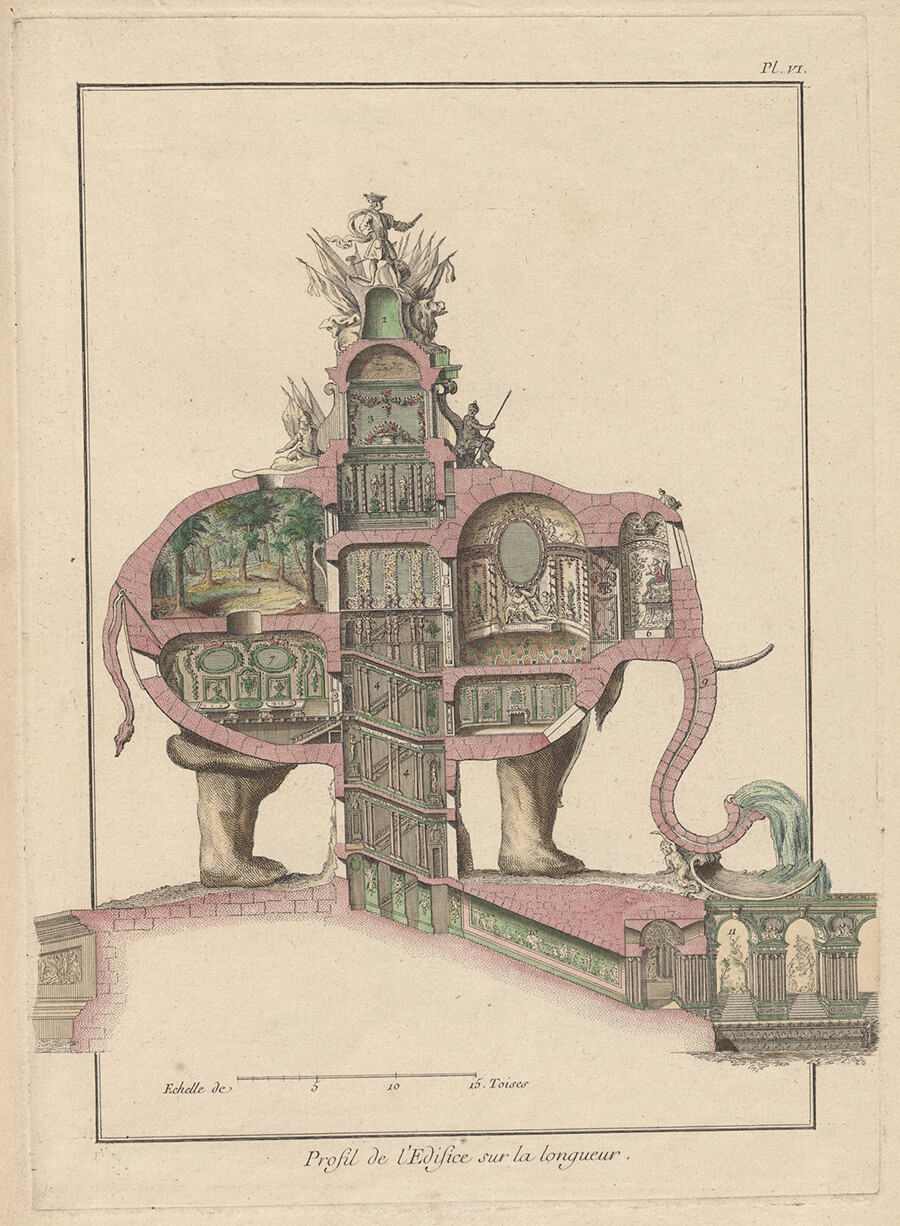

Charles-François Ribart’s elephant monument was one of a large number of proposals submitted by architects, engineers, and amateurs to a competition held in 1748 for a monument to Louis XV. Pierre Patte engraved and published many of the schemes, including this one that was presented by Ribart, a little-known engineer, as a model for a structure that could be built at any scale and situation, from a public monument to a king or private garden retreat. Pierre Patte after Charles-François Ribart, section view of Ribart’s elephant monument from Architecture singulière, l’éléphant triomphal, grand kiosque à la gloire du Roi (Paris: Chez P. Patte, 1758). Hand-colored etching. Avery Architectural & Fine Arts Library, Columbia University, AA2597 R35. Source: Avery Architectural & Fine Arts Library.
Competitions did not do the work of defining the public on their own, however, but were one of a multiplicity of occasions to establish the place of individuals in a shifting spatial order. Increasingly mobilized by the effects of real property and the privatization of land that eventually redesigned much of the earth’s surface, newly “liberated” persons were assigned a home in the public, a mobile space that conferred rights to all individuals within its borders but no universal right of entry. During the late-eighteenth century, for example, models of various versions of utopia were central both to French festivals organized for “le peuple” in the name of the Revolutionary government, and to English gardens made for Britons on newly privatized common land.6 Essential to their effects was the fact that these models were made at full, which is to say, at human/architectural scale. Only at this size could the models create spaces into which some could enter and exit, thereby providing self-affirming evidence that such persons were natural masters of a participatory public rather than objects of its exclusions.
Model making practices of the eighteenth century acted to establish the principle that the public sphere is a space made of circulating subjects who claim control over the places they occupy by means of their very occupation. However, the complexity of empire exceeded the capacity of model-making driven by delimited events—competitions, scientific experiments, revolutions—to naturalize the construction of a permanent sphere located between the domestic and the political, the rural and the urban. Models episodically made in discontinuous streets, books, laboratories, and gardens failed to account for a global order in which an ever-proliferating number of novel geographic, biological, and temporal agents had to be continuously wrested from one space and into another without ever apparently moving place. Instead, model-making shifted to and thereby produced new milieux across multiple domains, from industry and agriculture to the arts, where it operated to assign this ever-growing array of different things a place in a world presented as both stable and capable of infinite expansion.
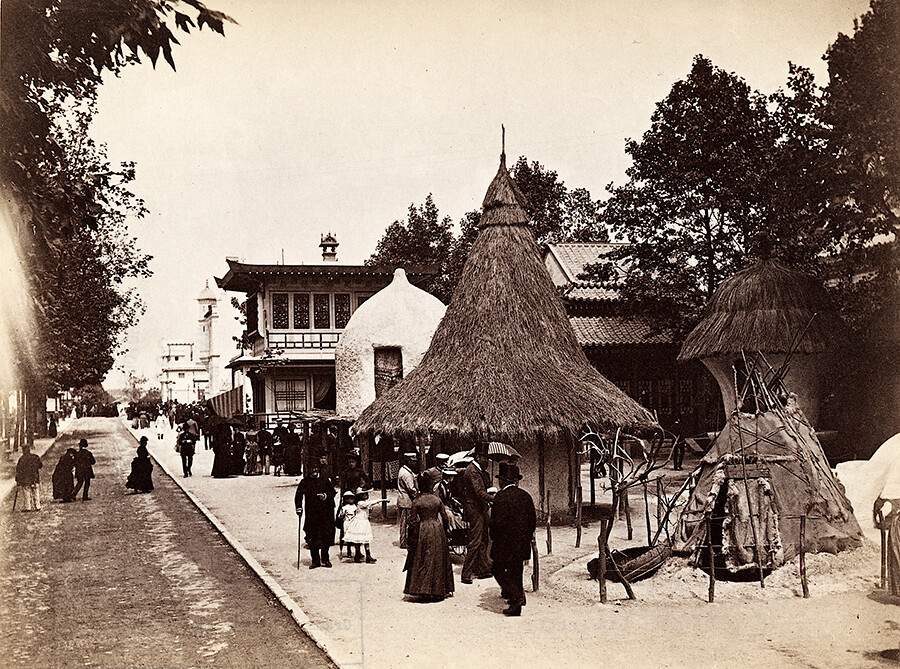

The Central African and Lapland Houses by Charles Garnier at the Exposition Universelle, Paris, 1889. Source: National Gallery of Art.
Larger and larger platforms, from world’s fairs and zoos to model farms and artists’ colonies, both constituted spatial models of imperial wholes made of heterogenous parts and were also made of individual spatial models in which humans, corn cobs, and mountains could be placed, retrieved, and repositioned.7 Living museums, for example, literally rearranged historically and spatially disparate buildings, turning them into models of a rapidly disappearing pre-industrial world, while simultaneously establishing a world order in which the person who perceives the disappearance is exempt from that process of extinction.8 These models were made architecturally, at building scale, and with the inputs and outputs of bodies: materials and energies that enabled life itself to unfold in and around them.
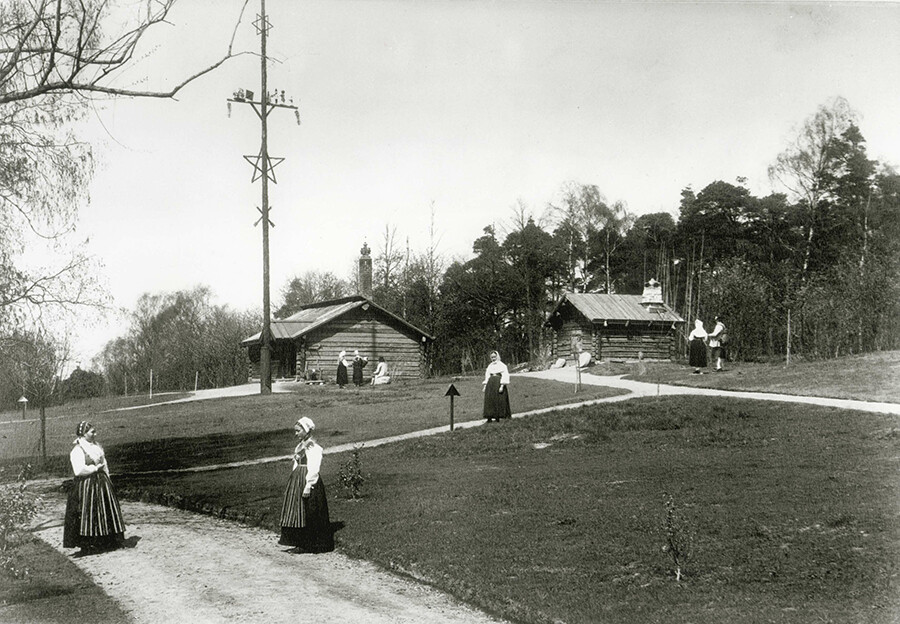

Moragarden, Skansen Open Air Museum, Stockholm. The figures in the foreground are living persons, but figures in the background are mannequins. Photo: Axel Lindahl/Nordiska museet.
This is all to say, although architectural models are generally classified in accordance with various representational and semantic regimes—of which there are infinitely many—architectural model making is an operation that, at its base, puts things in place and establishes that place at the same time. This happens by virtue of where model-making happens—in the network of loci and media situations through which they circulate—and in concert with how model-making happens—a process that wrests resources from the world and repositions them within an abstract system of spatial order. When these two spatial configurations confirm and amplify each other—when the places they occupy and those they produce are isomorphic—architectural models become cultural rather than architectural techniques, with consequences that go well beyond the architectural domain. What are commonly called 1:1 architectural models are especially prone to this isomorphism, precisely because they establish a single standard of measurement and spatial control both within and around themselves. They create and explain the world at the same time.


Missouri Corn Palace in the Palace of Agriculture at the 1904 World’s Fair. Source: Missouri History Museum/Wikimedia Commons.
To approach architectural model making as a cultural technique, rather than organize models into epistemic or aesthetic categories, may deflate their disciplinary status. But it could also inflate their broad salience. The risk of failing to strategically consider this exchange is suggested by the widespread interest in the models of Thomas Demand within architectural circles. As if bedazzled by the very interest in architectural work projected onto his practice, and distracted by the very visibility of all his models circulating through architectural channels, architects’ embrace of Demand’s models is at least partly rooted in a misunderstanding: that he intends them to affirm the status of architectural models as works of art. Although they represent architecture, are sometimes made by architects, and depend on certain conventionally architectural techniques, Demand’s models do not perform architectural work, and neither elevate nor devalue the architectural work of others. To the contrary, Demand’s architectural models are only opportunistically related to architecture and operate more fundamentally as stations within a complex network of communication signals. When he makes, photographs, and then discards them, Demand’s models perform the process through which contemporary culture wrests spatiality from the world, flattening even architecture into the dominion of circulating images. When he photographs models made by celebrated architects like John Lautner and Sanaa, the camera is focused on signs of technological artifacts, error, and decay that position the architect as merely one among a network of human and non-human agents. In other words, Demand is less affirmatively appropriating architectural model making than architects are failing to recognize his critique both of ideas about architectural representation that are no longer useful, and of architects who imagine themselves to be the central protagonists of the worlds they model.
Demand has himself argued that models are a cultural technique for filtering and transmitting information, and that as the world has become more complex and knowledge more specialized, model making has become an increasingly important epistemic tool and communication device.9 On the one hand, architectural models have no special status in this logic. On the other hand, Demand’s models, despite their architectural appearance, in fact suggest that the less narrowly focused architectural model making is on architectural concerns, the more culturally operative it might become. To assess the cost/benefit to architects of expending model-making resources requires bypassing the architecture represented by Demand’s models and focusing on the fact that Demand’s models are typically only one component of a complex of heterogenous things, media, and places: an event, an archive, a document, a newspaper, a studio, a paper factory, a camera, a gallery, a border, a regime, a toner, a person are all drawn together in an “image.” Undergirding such an image, then, is not a model or a referent but an ecology, a cultural base that will inevitably reduce attraction to architectural models as objects, but might also raise the value of architectural model making as an activity.
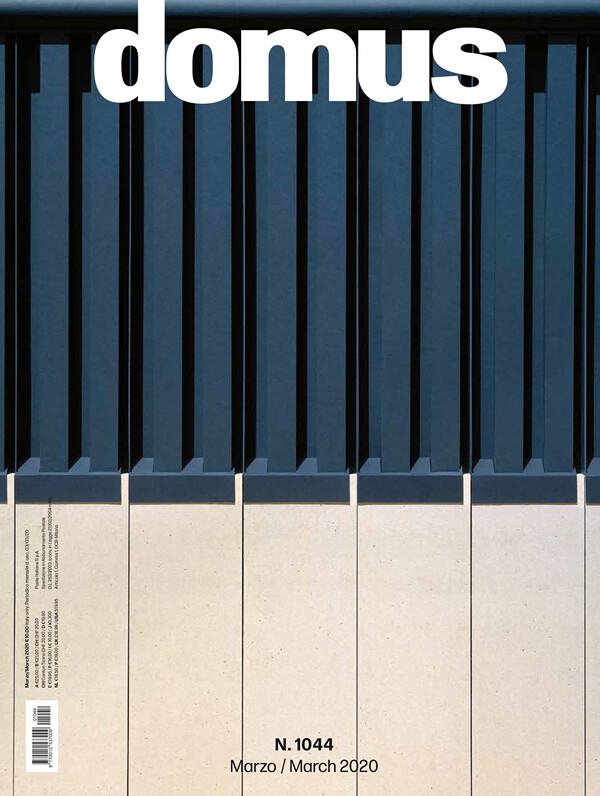

March 2020 cover of Domus, featuring Thomas Demand, Wall (2019).
The cultural agency of model making emerged when the cartographic and geodetic techniques of the early modern world, ideal for territorial management, proved inadequate to the task of producing and regulating public spheres and global empires.10 Essential to those tasks were three-dimensional, spatial systems that could organize and establish proper places for a far greater range of things than land or property. As indicated by their intense and global proliferation across expos, zoos, model cities, laboratories, and experimental houses until well into the mid-twentieth century, architectural models and particularly 1:1 architectural models were highly effective in producing and simultaneously naturalizing this order. If, at base, the problem today is how to operate ecologically, architectural model making could do more to account for its interdependence with and transformation by living systems and other artificial and technologized forces. There is neither anything essential to the architectural model that guarantees its relevance to productive ecological operations, nor can model makers simply choose to be exempt from the ecological impact of their actions. However, it is possible to acknowledge that making architectural models reconfigures ecologies and to use this capacity not only to passively occupy but to actively trigger the formation of novel ones.11 This might require nothing more than recognizing that the formulation “1:1” has been less a matter of architectural scale than a means of establishing anthropocentrism and claiming the earth, in all its immeasurable dimensions, as already hominized and domesticated. For some, this work has begun by replacing even just one of the 1’s around which architectural model making models itself.
This rise has also entailed a diminution of the authority of post-structuralist philosophical and literary forms of theory for which diagrams and other explicitly immaterial systems were most salient.
The rise of interest in and sometimes quite contradictory approaches to the subject is made evident by even just this following sample of publications, exhibitions and events: this series in e-flux, Log 50: Model Behavior and the companion exhibition curated by Cynthia Davidson, and the November 2022 conference “Are You a Model: On an Architectural Medium of Spatial Exploration,” organized by Anna-Maria Meister and the Institute for Architecture Theory and Science at the Technical University of Darmstadt. See also A. Jane Wharton, Models and World Making: Bodies, Buildings, Black Boxes, (University of Virginia Press, 2021); Teresa Fankhänel, The Architectural Models of Theodore Conrad: The “Miniature Boom” of Mid-Century Modernism (Bloomsbury Visual Arts, 2021); Matthew Mindrup, The Architectural Model: Histories of the Miniature and the Prototype, the Exemplar and the Museum (MIT Press, 2019); The Architectural Model: Tool, Fetish, Small Utopia, ed. Oliver Elsner and Peter Cachola Schmal (Scheidegger und Spiess, 2012) and Karen Moon, Modeling Messages: The Architect and the Model (New York: Monacelli Press, 2005).
This argument relies on the media theoretical work of Cornelia Vismann and Bernhard Seigert. In particular, see Vismann, “Cultural Techniques and Sovereignty,” Theory, Culture & Society 30, no. 6 (2013): 83–93; Siegert, “(Not) in Place: The Grid, or, Cultural Techniques of Ruling Spaces.” In: Cultural Techniques: Grids, Filters, Doors, and Other Articulations of the Real (New York: Fordham University Press, 2015), 97–120.
For an interesting discussion of the US Patent Office and its collection of models, see Courtney Fullilove, The Profit of the Earth: The Global Seeds of American Agriculture (University of Chicago Press, 2017).
On competitions and the history of the public sphere discourses, see Richard Taws, “Revolutionary Models/Model Revolutionaries: Architecture, Print, and Participation at The Festival of The Federation.” In: The Politics of the Provisional: Art and Ephemera in Revolutionary France (Penn State University Press, 2013), 70–95; Yvonne Luke, “The Politics of Participation: Quatremère de Quincy and the Theory and Practice of ‘Concours Publiques’ in Revolutionary France 1791-1795,” Oxford Art Journal 10, no. 1 (1987): 15–43.
The definitive study of French festivals remains Mona Ozouf’s Festivals and the French Revolution, A. Sheridan trans. (Harvard University Press, 1991). Garden structures are most commonly referred to as “pavilions,” but many were also models of things, such as temples and huts, and for things, especially agricultural practices. For an interesting discussion of model farm building, see Laura B. Sayre, “Locating the Georgic: From the ferme ornée to the Model Farm,” Studies in the History of Gardens & Designed Landscapes 22, no. 3 (2002): 167–192.
This topic has an enormous literature, but for one general and one specific reference see Robert W. Rydell, All the World’s a Fair: Visions of Empire at American International Expositions, 1876-1916 (University of Chicago Press, 1985), and Pamela Simpson, Corn Palaces and Butter Queens: A History of Crop Art and Dairy Sculpture (University of Minnesota Press, 2021).
See Mark B. Sandberg, “Effigy and Narrative: Looking Into the Nineteenth Century Folk Museum,” Cinema and the Invention of Modern Life, Leo Charney and Vanessa R. Schwartz, eds. (Berkeley: University of California Press, 1995), 320–355.
See the February 23, 2021 interview with Demand on DomusWeb, ➝.
On the history of spatial ordering devices in this context, see Martin Bruckner, The Geographic Revolution in Early America: Maps, Literacy, and National Identity (University of North Carolina Press, 2006), and Andro Linklater, Owning the Earth: The Transforming History of Land Ownership (Bloomsbury Publishing, 2013).
See Allison Carruth, Novel Ecologies, forthcoming with the University of Chicago Press.
On Models is a collaboration between e-flux Architecture and The Museum of Contemporary Art Toronto.







